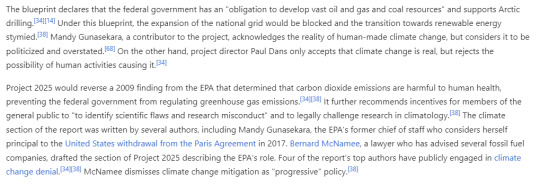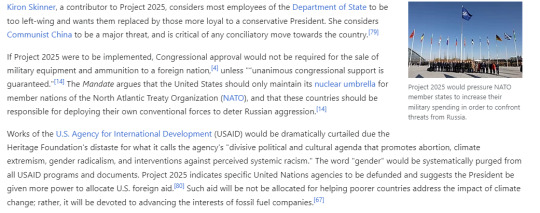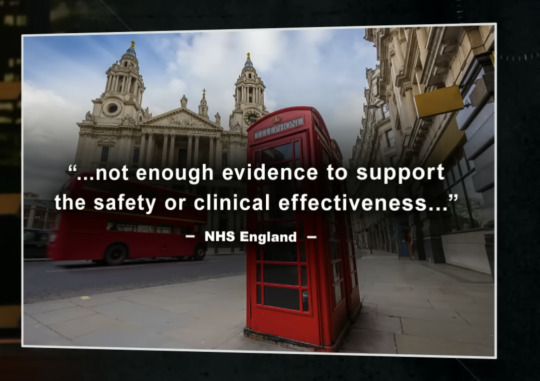#air pollution control equipment
Explore tagged Tumblr posts
Text
Industrial Air Filtration: A Breath of Fresh Air for Your Operations
Why Industrial Air Filtration Matters
In today's industrial landscape, maintaining clean air quality is paramount for both worker safety and operational efficiency. Industrial processes often generate a wide range of contaminants, including dust, fumes, and hazardous gases. These pollutants can not only harm workers' respiratory health but also damage equipment and reduce product quality.
The Role of Industrial Air Filtration
Industrial air filtration systems are designed to capture and remove these contaminants, ensuring a clean and safe working environment. By effectively filtering the air, these systems help to:
Protect worker health: Reduce exposure to harmful particles and gases.
Improve product quality: Minimize contamination and improve product consistency.
Increase equipment lifespan: Reduce wear and tear on machinery.
Comply with environmental regulations: Meet stringent air quality standards.
Key Components of Industrial Air Filtration Systems
Industrial air filtration systems typically consist of the following components:
Inlet: The point where contaminated air enters the system.
Pre-filter: Removes large particles and debris, protecting the primary filter.
Primary filter: Captures smaller particles, such as dust and pollen.
High-Efficiency Particulate Air (HEPA) filter: Removes extremely fine particles, including bacteria and viruses.
Fan: Circulates air through the system.
Exhaust: The point where clean air is released back into the environment.
Intensiv-Filter Himenviro: A Leader in Industrial Air Filtration
Intensiv-Filter Himenviro is a leading provider of industrial air filtration solutions. They offer a wide range of products and services to meet the diverse needs of industries such as manufacturing, pharmaceutical, and healthcare. Their expertise lies in designing and manufacturing high-quality filtration systems that are tailored to specific customer requirements.
By partnering with Intensiv-Filter Himenviro, businesses can benefit from:
Customized solutions: Tailored filtration systems to meet specific needs.
High-quality products: Durable and efficient filtration solutions.
Expert support: Comprehensive installation, maintenance, and repair services.
Energy efficiency: Systems designed to minimize energy consumption.
Environmental compliance: Solutions that help meet stringent environmental regulations.
Conclusion
Industrial air filtration is a critical aspect of maintaining a safe and productive work environment. By investing in high-quality filtration systems, businesses can protect their workers, improve product quality, and reduce their environmental impact. Intensiv-Filter Himenviro is a trusted partner that can help you achieve these goals.
#Air pollution control equipment#Dust collector#Electrostatic precipitator#Fabric filter#Bag filter#Dust extraction system#Dust removal systems#Carbon black filter#Cement filter#Hybrid electro filter
0 notes
Text
#industrial air pollution control equipment manufacturers Chennai#Industrial Ventilation Systems Manufacturers Chennai
0 notes
Text
Cutting-Edge Air Pollution Control Equipment from Surat
https://www.blowerfab.com/
Surat's reputation as a leading industrial center is bolstered by its commitment to environmental sustainability, exemplified by its cutting-edge air pollution control equipment. Local manufacturers specialize in the production of advanced devices like cyclone separators, activated carbon filters, and centrifugal blowers, all designed to effectively reduce industrial emissions. These high-performance systems are crucial in maintaining air quality and safeguarding public health. With a focus on innovation and regulatory compliance, Surat continues to set benchmarks in the field of air pollution control, ensuring a cleaner, greener future.
#industrial blower#air pollution control#air pollution controller equipment#blower fan#industrial fan
0 notes
Text
ESG and Sustainability Reporting: Comprehensive Guide and Best Practices
In today's business landscape, ESG and Sustainability Reporting have become crucial for companies aiming to demonstrate their commitment to environmental, social, and governance (ESG) criteria. This comprehensive guide explores the importance of ESG and Sustainability Reporting, its benefits, and best practices for effective implementation.

The Importance of ESG and Sustainability Reporting
ESG and Sustainability Reporting helps organizations:
Enhance transparency and accountability.
Attract socially conscious investors.
Improve risk management.
Foster a positive corporate reputation.
Comply with regulatory requirements.
Benefits of ESG and Sustainability Reporting
Investor Attraction: Companies with robust ESG practices often attract investors looking for sustainable and ethical investments.
Risk Management: Identifying and addressing ESG risks can prevent potential issues and reduce long-term costs.
Reputation Management: Transparent reporting on ESG efforts can enhance a company's public image and build trust with stakeholders.
Regulatory Compliance: Adhering to ESG reporting standards helps companies meet regulatory requirements and avoid penalties.
Best Practices for ESG and Sustainability Reporting
Define Clear Objectives: Establish clear goals and objectives for your ESG initiatives.
Engage Stakeholders: Involve stakeholders in the reporting process to ensure comprehensive and accurate data.
Use Standardized Frameworks: Adopt recognized frameworks such as GRI, SASB, or TCFD for consistent reporting.
Ensure Data Accuracy: Implement robust data collection and verification processes to ensure the accuracy of reported information.
Communicate Transparently: Clearly communicate your ESG performance, achievements, and areas for improvement.
Continuously Improve: Regularly review and update your ESG strategies and reporting processes.
FAQs
Q: What is ESG and Sustainability Reporting? A: ESG and Sustainability Reporting involves disclosing a company's environmental, social, and governance practices and performance to stakeholders.
Q: Why is ESG and Sustainability Reporting important? A: It enhances transparency, attracts investors, improves risk management, builds reputation, and ensures regulatory compliance.
Q: What frameworks are used for ESG and Sustainability Reporting? A: Common frameworks include the Global Reporting Initiative (GRI), Sustainability Accounting Standards Board (SASB), and Task Force on Climate-related Financial Disclosures (TCFD).
Q: How can companies improve their ESG and Sustainability Reporting? A: By defining clear objectives, engaging stakeholders, using standardized frameworks, ensuring data accuracy, communicating transparently, and continuously improving their practices.
Conclusion
ESG and Sustainability Reporting is essential for modern businesses seeking to demonstrate their commitment to sustainable and ethical practices. By following best practices and using standardized frameworks, companies can enhance their transparency, attract investors, and build a positive reputation.
Source:- https://esgandsustainabilityreporting.blogspot.com/2024/06/esg-and-sustainability-reporting.html
#Waste Strategy and Circular Economy#ESG and Sustainability Reporting#Net Zero and Carbon Management#Life Cycle Assessment(LCA) and Environment Product Declaration(EPD)#GHG Accounting and Assessment#Coastal Protection and Marine Bioremediation#Sustainable Aquaculture#Air Pollution Control equipment’s#Water Pollution Control Equipment#Energy and Water Audit
0 notes
Text
Leading Electrostatic Precipitator Components, ESP Internals, Collecting And Discharge Electrodes & Plates Manufacturers, Air Pollution Control Equipment Manufacturing.
#Electrostatic Precipitator Components#Air Pollution Controlling Equipment Manufacturers#Air Pollution Control Equipment Manufacturing Companies#Collecting And Discharge Electrode Manufacturers
0 notes
Text
Air Pollution Control Equipment in Hyderabad
Combat air pollution with top-notch Air Pollution Control Equipment in Hyderabad. Explore our range of effective pollution control measures.

0 notes
Text
#engineering company pune#pneumatic conveying system manufacturer pune#Air Pollution Control Equipment in Pune#Rajdeep Engineering Systems (Pune) Pvt Ltd.
1 note
·
View note
Text
Best Practices for Selecting Bag Filter Manufacturers for Your Industrial Needs
Introduction
Bag filters are essential components of many industrial processes. They are used to filter out impurities and pollutants from gasses and liquids, helping to ensure the safety and efficiency of various manufacturing processes. When it comes to selecting bag filter manufacturers for your industrial needs, there are several best practices to keep in mind. In this blog, we will explore some of these practices and how they can help you choose the right Bag Filter Manufacturers in Pune
Following are the Best Practices when Choosing to Bag Filter Manufacturer
Look for Experience and Expertise:
When it comes to bag filter manufacturing, experience, and expertise matter. Look for manufacturers who have been in the business for a long time and have a track record of producing high-quality filters that meet industry standards. Check the manufacturer's website to see their experience and expertise in bag filter manufacturing.
Consider the Manufacturer's Capabilities:
Different industrial processes require different types of bag filters. When selecting a manufacturer, consider their capabilities in terms of the types of filters they can produce. Choose a manufacturer that can produce a wide range of filters to meet your specific needs.
Quality Assurance:
Ensure that the manufacturer has quality assurance measures in place to ensure that their filters meet industry standards. Look for certifications such as ISO 9001:2015, which indicate that the manufacturer has implemented a quality management system.
Customization:
Look for manufacturers that can customize bag filters to meet your specific needs. Customized filters can help improve the efficiency of your industrial processes and minimize downtime.
After-Sales Support:
Select a manufacturer that provides after-sales support, such as installation, maintenance, and repair services. This can help ensure that your bag filters continue to perform optimally over their lifespan.
Conclusion
In summary, selecting the right bag filter manufacturer is critical to the success of your industrial processes. When selecting a manufacturer, consider their experience and expertise, capabilities, quality assurance measures, customization options, and after-sales support. By following these best practices, you can choose the right bag filter manufacturer in Pune that can meet your specific industrial needs.
#Dust Collector Manufactures in Pune#Pollution Control Equipment Manufacturers in Pune#Air Pollution Control Devices in Pune#Bag Filter Manufactures in Pune#Pulse Filter Manufacturers in Pune#Induced Draft Fans
0 notes
Text
"On a blustery day in early March, the who’s who of methane research gathered at Vandenberg Space Force Base in Santa Barbara, California. Dozens of people crammed into a NASA mission control center. Others watched from cars pulled alongside roads just outside the sprawling facility. Many more followed a livestream. They came from across the country to witness the launch of an oven-sized satellite capable of detecting the potent planet-warming gas from space.
The amount of methane, the primary component in natural gas, in the atmosphere has been rising steadily over the last few decades, reaching nearly three times as much as preindustrial times. About a third of methane emissions in the United States occur during the extraction of fossil fuels as the gas seeps from wellheads, pipelines, and other equipment. The rest come from agricultural operations, landfills, coal mining, and other sources. Some of these leaks are large enough to be seen from orbit. Others are miniscule, yet contribute to a growing problem.
Identifying and repairing them is a relatively straightforward climate solution. Methane has a warming potential about 80 times higher than carbon dioxide over a 20-year period, so reducing its levels in the atmosphere can help curb global temperature rise. And unlike other industries where the technology to decarbonize is still relatively new, oil and gas companies have long had the tools and know-how to fix these leaks.
MethaneSAT, the gas-detecting device launched in March, is the latest in a growing armada of satellites designed to detect methane. Led by the nonprofit Environmental Defense Fund, or EDF, and more than six years in the making, the satellite has the ability to circle the globe 15 times a day and monitor regions where 80 percent of the world’s oil and gas is produced. Along with other satellites in orbit, it is expected to dramatically change how regulators and watchdogs police the oil and gas industry...
A couple hours after the rocket blasted off, Wofsy, Hamburg, and his colleagues watched on a television at a hotel about two miles away as their creation was ejected into orbit. It was a jubilant moment for members of the team, many of whom had traveled to Vandenberg with their partners, parents, and children. “Everybody spontaneously broke into a cheer,” Wofsy said. “You [would’ve] thought that your team scored a touchdown during overtime.”
The data the satellite generates in the coming months will be publicly accessible — available for environmental advocates, oil and gas companies, and regulators alike. Each has an interest in the information MethaneSAT will beam home. Climate advocates hope to use it to push for more stringent regulations governing methane emissions and to hold negligent operators accountable. Fossil fuel companies, many of which do their own monitoring, could use the information to pinpoint and repair leaks, avoiding penalties and recouping a resource they can sell. Regulators could use the data to identify hotspots, develop targeted policies, and catch polluters. For the first time, the Environmental Protection Agency is taking steps to be able to use third-party data to enforce its air quality regulations, developing guidelines for using the intelligence satellites like MethaneSAT will provide. The satellite is so important to the agency’s efforts that EPA Administrator Michael Regan was in Santa Barbara for the launch as was a congressional lawmaker. Activists hailed the satellite as a much-needed tool to address climate change.
“This is going to radically change the amount of empirically observed data that we have and vastly increase our understanding of the amount of methane emissions that are currently happening and what needs to be done to reduce them,” said Dakota Raynes, a research and policy manager at the environmental nonprofit Earthworks. “I’m hopeful that gaining that understanding is going to help continue to shift the narrative towards [the] phase down of fossil fuels.”
With the satellite safely orbiting 370 miles above the Earth’s surface, the mission enters a critical second phase. In the coming months, EDF researchers will calibrate equipment and ensure the satellite works as planned. By next year [2025], it is expected to transmit reams of information from around the world."
-via Grist, April 7, 2024
#satellite#epa#environmental protection agency#environmental activism#methane#emissions#climate change#climate news#climate action#natural gas#fossil fuels#global warming#good news#hope
143 notes
·
View notes
Text
Hi guys! I'm here to tell you about some of the stuff Project 2025 would do to America.

Number One: Making America a Christian Nation. What this means is the separation of church and state would be gone, and Trump will implement a "Bible-based system of government". Practicing other religions could be banned.


Number Two: Climate Change. Project 2025 will be completely removing most of the nation's regulations to help our environment. Abandoning ways to reduce greenhouse gases, abolishing the National Oceanic and Atmospheric Administration, relaxing regulations on fossil fuels, encouraging fossil fuel usage, and supporting arctic drilling.

Number 3: Letting states control education. No more nationwide education, every state chooses what it wants to do. Possibility of removing accommodation plans for students who need it, no more free school meals even for free and reduced lunch plans, and the quote "Education is a private rather than a public good."

Number 4: Giving the president more power. The branches of government are supposed to balance each other out, make sure no one branch gets too powerful. This will make that a lot harder.

Number 5: Foreign Affairs. Congressional approval would not be required for the sale of military equipment and ammunition to a foreign nation. Also "The word gender would be systematically purged from all USAID programs and documents"???? "Such aid will not be allocated for helping poorer countries address the impact of climate change; rather, it will be devoted to advancing the interests of fossil fuel companies"????

Number 6: Healthcare. Removing Medicare's ability to negotiate medicine prices, denying gender-affirming care to trans people, forcing people to have a nuclear family basically.

Number 7: All of this bullshit. It's all shit, but please take a look at the last sentence of paragraph 4: "Trump has also spoken of rounding up homeless people in blue cities and detaining them in camps."

Number 8: LGBTQ community. "Proposes the recognition of only heterosexual men and women, the removal of protection against discrimination on the basis of sexual or gender identity, and the elimination of provisions pertaining to diversity, equity, and inclusion (DEI) from federal legislation." "The goal here is to move toward colorblindness and to recognize that we need to have laws and policies that treat people like full human beings not reducible to categories, especially when it comes to race." THEN LET US BE WHO WE ARE. THIS IS THE OPPOSITE DIRECTION OF WHAT YOU ARE SAYING.

Number 9: Banning pornography. Just let people be people. We have needs. Let us be. Especially when Trump had that sneaky link that led him being charged on 34 counts.

Number 10: Abortion. Are we really going to let white males who don't know where the clitoris is decide what Women get to do with their bodies? You said in the pornography thing that it leads to the exploration of women, but isn't this doing the exact same thing?
In conclusion, Project 2025 would take away numerous rights that we deserve as human beings, including, but not limited to, having a clean environment, the right to an education, access to necessary medication, freedom of expression, sexual media, women's choice with their own bodies, and possibly freedom of religion, one of America's first amendment rights.
I'm scared. I am a queer minor with school accommodations, who has no way out of America.
I don't want to flunk out of high school because my accommodations got taken away from me.
I don't want to have a child at all, let alone before I turn 18 because I got raped and can't get an abortion because of what the government says I can and can't do with my body.
I don't want to be trapped in an area where I can barely breathe because of all the pollutants in the air.
I don't want to be discriminated against, harassed, or dehumanized because of my gender identity and sexuality.
I don't want to be forced to be a Christian.
I'm scared of my own country, and what it could do to me. I don't want to die.
Vote Blue. Or else America could be turned into a suppressive dictatorship.
Note: I will be unpinning this because there have been a lot of comments that make me think I may have said some things wrong in this post. I don't want to completely remove it, because a lot of people have reblogged it to spread information, but I will be removing it from my pin.
#project 2025#election 2024#american politics#us elections#2024 elections#vote blue no matter who#lgbt rights#queer rights#gay rights#education#abortion#environment#enviormentalism#religion#long post#rant#sort of#im scared#america#fuck america#fuck trump#fuck everything#i dont want to die#not like this
158 notes
·
View notes
Text
youtube
New Rule: Whoa, Canada | Real Time with Bill Maher
And finally, New Rule. If we want to save our country, we should follow the advice good liberals have given for decades and learn from other countries.
Especially those beacons of progressivism like Canada, England, and Scandinavia, and I agree we should, as long as we're honest about the lessons we're learning. And as long as we're up to date on the current data. Such as, the unemployment rate in the US is 3.8 percent. And in Canada, it's 6.1. And of the 15 North American cities with the worst air pollution, 14 are in Canada.


I'm not citing these stats because I have it out for Canada. I love Canada, and its people, and always have, but I hate zombie lies. Zombie lies. That's when things change but what people say about them doesn't. Yes, for decades, places like Vancouver, and Amsterdam, and Stockholm seemed idyllic, because everything was free and all the energy we needed was produced by riding a bike to your job at the windmill. Canada was where all the treasured goals of liberalism worked perfectly. It was like NPR come to life but with poutine.
Canada was the Statue of Liberty with a low-maintenance haircut and cross-country skis. A giant idealized blue state with single-payer health care, gun control, and abortion on polite demand. Canada was where every woke White college kid, wearing pajama pants outdoors who'd had it up to here with America's racist patriarchy, dreamt of living someday. I mean, besides Gaza.

There's only one problem with thinking everything's better in Canada. It's not. Not anymore anyway. Last year, Canada added 1.3 million people, which is a lot in one year. The equivalent of the US adding 11 million migrants in one year. And now, they are experiencing a housing crisis even worse than ours. And we're sleeping in tents. The median price of a home here is 346 grand, in Canada, converted to US dollars, it's 487. If Barbie moved to Winnipeg, she wouldn't be able to afford her dream house and Ken would be working at Tim Hortons. And because of mortgage debt, Canada has the highest debt to GDP ratio of any G7 nation. I don't know what that means, but it sounds bad.


So does their vaunted health care system, which ranks dead last among high income countries in access to primary health care and ability to see a doctor in a day or two. And it's not for lack of spending. Of the 30 countries with universal coverage, Canada spends over 13 percent of its economy on it, which is a lot of money for free health care.

Look, I'm not saying Canada still isn't a great country. It is, but those aren't paradise numbers. If Canada was an apartment, the lead feature might be "America adjacent." And if America was a rental car, Canada would be "America or similar."
And again, honestly, Canada, I'm not saying any of this 'cause I enjoy it. I don't, 'cause I've always enjoyed you. But I need to cite you as a cautionary tale to help my country. And the moral of that tale is, "Yes, you can move too far left." And when you do, you wind up pushing the people in the middle to the right. At its worst, Canada is what American voters think happens when there's no one putting a check on extreme wokeness.
Like the saga of Canadian shop teacher, Kayla Lemieux, whose pronouns are she/her and those. Kayla is now back to being a guy named Kerry, but two years ago when "they" showed up to teach children, the progressive high school "they" taught at said that they-- They, the school, not the person. Really? You couldn't have found another word? We were using that one. Anyway, okay. They were committed to a safe environment for gender expression. Safe for who? What about the children? What about the equipment in that shop class?


You know, there was once a weirdo D-list movie producer in the '60s named Russ Meyer who made low-budget B movies like Faster, Pussycat! Kill! Kill! And Beyond the Valley of the Dolls. Always featuring women who look like this. His movies played in porn houses and were featured in Hustler and Playboy. Okay, fine, but who says, "No, when it comes to huge, ridiculous tits, let's save that for the kids."
And this is why people vote for Trump. They say in politics, liberals are the gas pedal and conservatives are the brakes, and I'm generally with the gas pedal, but not if we're driving off a cliff.

On the trans issue, America is no ands, ifs, or buts about it, absolutely alone in the world now. An outlier country. Last month, England's National Health Service announced that there's "not enough evidence to support the safety or clinical effectiveness" of puberty blockers for third graders, and that they were going to stop fumbling around with children's privates, because that's Prince Andrew's job.

So too with all the other good place countries in direct opposition to America's choice to affirm children's wishes on switching gender, no matter the age or psychiatric history. The Far Left, which always like to use, "Well, Europe does it." Yeah, no, that doesn't work on this one anymore.


Or on immigration. Sweden opened its borders to over a million and a half immigrants since 2010. And now 20 percent of its citizens are foreign-born and its education system is tanking, and it has Europe's highest rate of gangland killings. And one result is that the far-right parties are in the government now there for the first time.




To which liberals say, "Blaming immigrants for the rising crime rate is racist." Yeah, but is it true? Of course, it's true. It's not a coincidence. The quality of life went down after the Somali gangs started a drug turf war using hand grenades.

Calling it "racist" doesn't solve the problem. It hands future elections to someone who will solve the problem, and who, I promise, you're not going to like.

==
For the record, I've said literally all of this, including making the comparison of flying off a cliff if you rely entirely on the gas pedal. Just saying.
When Trump takes office again, and he will, people will act stunned and ask, "how could this have ever happened?"
#Bill Maher#Real Time with Bill Maher#immigration#gender ideology#medical scandal#Canada#Sweden#Somali gangs#medical corruption#religion is a mental illness
10 notes
·
View notes
Text
Electrostatic precipitators (ESPs) are a crucial technology in industrial air pollution control. They utilize an electric field to remove dust and other particulate matter from gas streams, playing a vital role in improving air quality and protecting the environment.
ESPs are widely used in industries such as:
Power plants: Removing fly ash from flue gases.
Cement production: Capturing dust generated during the manufacturing process.
Steel mills: Controlling emissions from various stages of steel production.
How ESPs Work
Ionization: High voltage is applied to electrodes within the ESP, ionizing the surrounding air and creating a strong electric field.
Charging: As particles pass through this ionized field, they acquire an electrical charge.
Collection: These charged particles are then attracted to oppositely charged collection plates, where they adhere.
Removal: The collected particles are periodically removed from the plates through rapping or washing mechanisms.
Key Advantages of ESPs:
High Efficiency: ESPs are highly effective at removing fine particles, including those that are difficult to capture using other methods.
Low Operating Costs: Once installed, ESPs have relatively low operating costs.
Versatility: They can be adapted to handle a wide range of particulate matter and gas flow rates.
Environmental and Economic Benefits:
By effectively removing harmful particulate matter from industrial emissions, ESPs contribute to:
Improved air quality: Reduced emissions of particulate matter that can have detrimental effects on human health and the environment.
Enhanced product quality: In many industries, particle removal is crucial for maintaining product quality and consistency.
Reduced environmental impact: Minimized environmental impact by reducing pollution and improving resource efficiency.
Cost savings: Reduced maintenance costs, improved energy efficiency, and minimized downtime due to equipment failure.
The Future of ESP Technology:
Ongoing research and development focus on:
Computational Fluid Dynamics (CFD): Utilizing CFD simulations to optimize ESP design, allowing for more precise prediction and improvement of separation efficiency.
Advanced Materials: Utilizing advanced materials like high-strength ceramics and corrosion-resistant alloys to improve ESP durability and enable the design of more compact and efficient systems.
Conclusion:
Electrostatic precipitators are a testament to the power of ingenuity in engineering. By harnessing the principles of electrostatics, these devices play a vital role in improving air quality, enhancing industrial efficiency, and minimizing environmental impact. As industries strive for greater sustainability and stricter environmental regulations, the importance of efficient and reliable air pollution control technologies like ESPs will only continue to grow.
#air pollution control equipments#electrostatic precipitators“”“#intensiv-filter himenviro#air filtration technology
0 notes
Text
#industrial air pollution control equipment manufacturers Chennai#Industrial Ventilation Systems Manufacturers Chennai
0 notes
Text
High-Performance Air Blower Fans by SYMBIOSIS Blowerfab in Gujarat
SYMBIOSIS Blowerfab is the leading air blower fan manufacturer in Gujarat, renowned for superior quality and performance. Our air blower fans are designed to provide efficient airflow, robust durability, and energy-saving solutions for diverse industrial applications. As the foremost manufacturer in Gujarat, we ensure each product meets stringent industry standards, offering long-lasting and reliable performance. Upgrade your industrial operations with SYMBIOSIS Blowerfab’s high-quality blower fans that promise exceptional efficiency and effectiveness. Discover our extensive range today and benefit from the best in air blower technology.
#blower fan#blowerfan#centrifugal blower#industrial blower#air pollution controller equipment#air blower
0 notes
Text
#Waste Strategy and Circular Economy#ESG and Sustainability Reporting#Net Zero and Carbon Management#Life Cycle Assessment(LCA) and Environment Product Declaration(EPD)#GHG Accounting and Assessment#Coastal Protection and Marine Bioremediation#Sustainable Aquaculture#Air Pollution Control equipment’s#Water Pollution Control Equipment’s#Energy and Water Audit
0 notes
Text

Leading Electrostatic Precipitator Components, ESP Internals, Collecting And Discharge Electrodes & Plates Manufacturers, Air Pollution Control Equipment Manufacturing.
#Air Pollution Controlling Equipment Manufacturers#Air Pollution Control Equipment Manufacturing Companies
0 notes